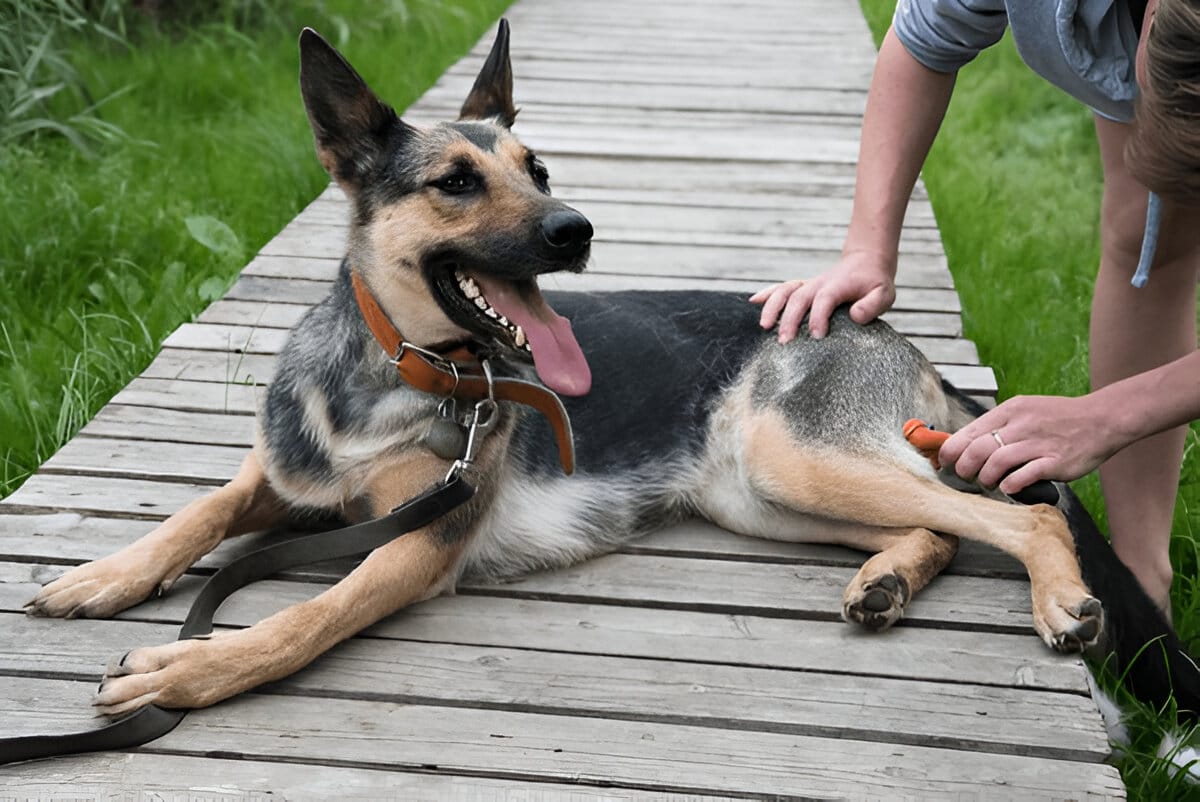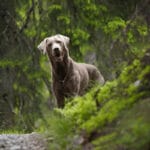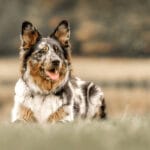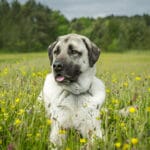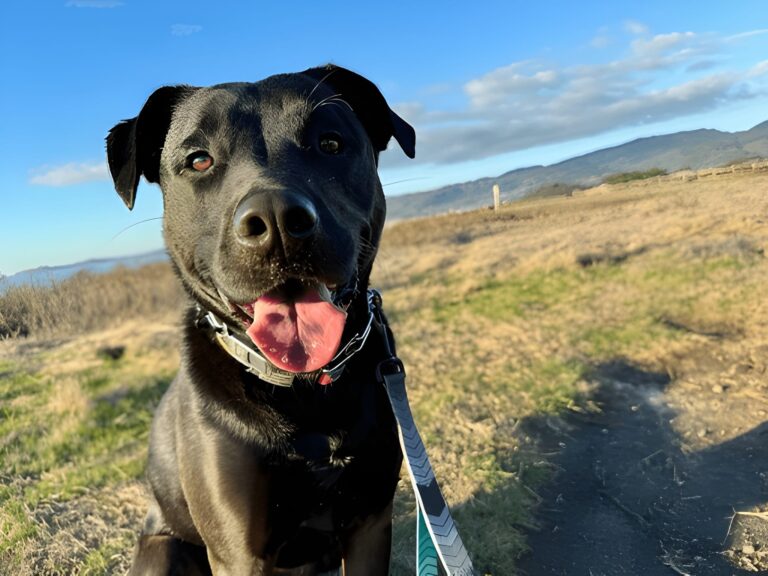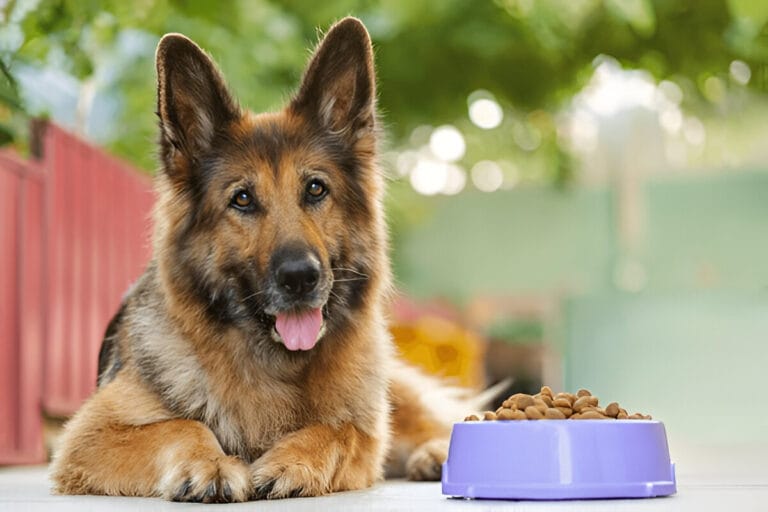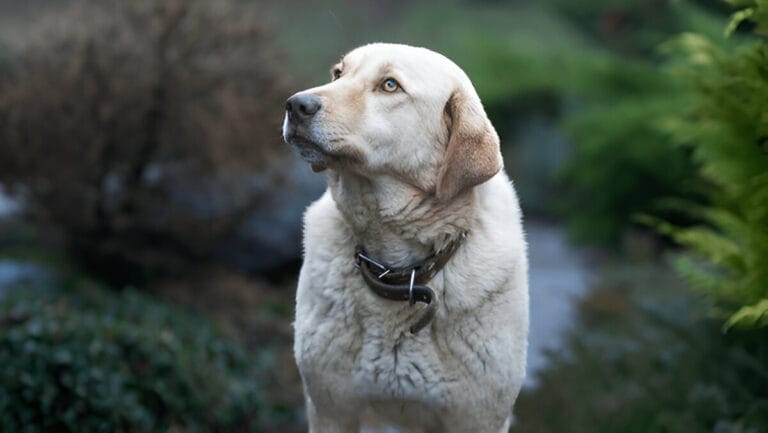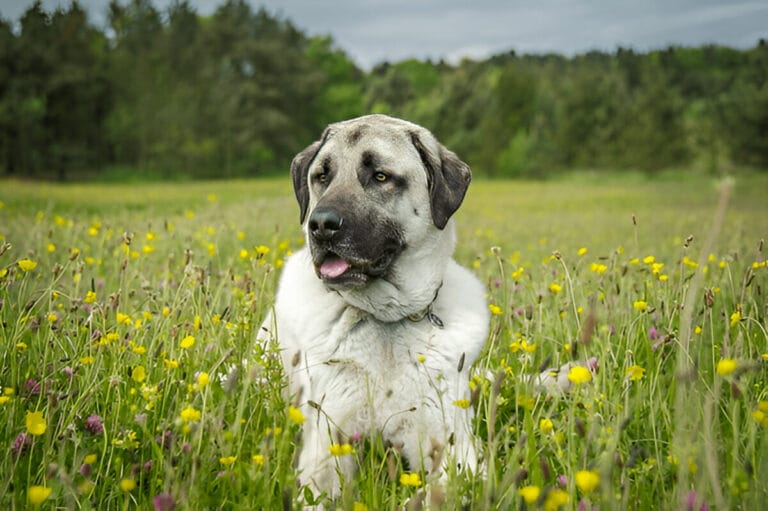German Shepherd Shedding: What Every Owner Should Know
Intelligent and easily trained, the German Shepherd is one of the most popular breeds among dog lovers. Shepherds are active and courageous, and excel at almost all activities.
If you own one, you will already know how protective they are. You may also know how much they tend to shed. If you plan on becoming an owner, you should be prepared for your dog’s shedding.
In this article, we discuss how to deal with it and why it is not a big problem.Have you reached a conclusion about welcoming a German Shepherd into your home?Congratulations! These loyal and smart dogs make wonderful companions as well as excellent watch dogs.
However, owning one comes with a few responsibilities, including understanding their coat and shedding habits.
A critical question many potential owners ask is: “Do German Shepherds shed?” The simple response is absolutely – these dogs shed anywhere from moderately to extensively.
They shed year-round and are not hypoallergenic. While they might look sleek and easy to manage, their coat requires regular maintenance to keep shedding under control. Let’s explore what you can expect from your German Shepherd’s shedding and practical ways to manage fur in your home.
Photo credit: Shutterstock by Karpova
Why do German Shepherds shed?
This dog breed has two layers of coat – a topcoat or guard hair and an undercoat. The outer coat is typically dense, smooth, level, and rough in texture, fitting snugly against the dog’s frame.
It can also be wavy or wiry in texture. On the other hand, the undercoat is soft and thicker than the guard hair.
The coats of German Shepherds vary in length and color – Short coat with an undercoat, Medium coat, and Long coat without an undercoat. Just like many other breeds, German Shepherds experience shedding. There are a number of reasons why their hair falls off, but the most common reason is to protect them from changing seasons.
Shedding serves as protection from harsh weather – whether it is cold, heat, or sun. It acts as a regulator for temperature control. Hair loss occurs as a normal biological function in German Shepherd breeds. For the majority of dogs, it’s crucial for the health of skin and fur. Dogs shed to get rid of hair when it becomes worn out or otherwise damaged.
Also, their body reacts to change in seasons – the body can recognize each season. For example, when winter begins, the day will become shorter and the Sun will not stay long. Lack of sunlight means that winter is approaching, and that’s the time to start shedding to reject the summer coat and replace it with a thicker winter coat.
Because of some allergies, hormonal changes, parasites, stress, poor diet, pain, fleas, ticks, and other factors, dogs may shed more than usual. If you notice your dog shedding excessively, we highly recommend you talk to a vet and check what’s causing it. Always use and feed your GSD high-quality food, never skip vet checks, and provide exercise enough to keep them healthy and their shedding at normal levels.
When do German Shepherds shed?
German Shepherds shed throughout the year, but because of season change and natural shedding cycles before winter and summer, you can expect a period of about 20 days when your Shepherd will shed much more than usual. We can’t tell exactly in which month or how long it will take – this depends on the climate zone.
Every dog has different genes and every country has its own climate patterns. German Shepherds tend to blow their coats all-year-round.
This is the reason why they are sometimes called heavy Shedders. Their coat responds naturally to daylight changes, so when days start to get shorter, they know fall is fast approaching and they grow new winter fur.
You should be ready for massive shedding during fall and spring seasons. Similarly, you need to be also prepared when your dog blows their coat in spring since it’s time for days to become longer and they have to rid themselves of heavy winter fur.
During these times, you might find 10 times or more undercoat fur around your home than normal. From my experience working with German Shepherds, I’ve noticed that indoor dogs may have slightly different shedding patterns compared to outdoor dogs, but the seasonal “coat blowing” periods remain consistent regardless of living arrangements.
How much do German Shepherds shed?
Getting a German Shepherd might not be a good choice if you do not look forward to dealing with heavy shedding. This breed sheds a lot of its fur, and when shedding season comes, expect your home to be filled with dog hair. It can be overwhelming, and it will take patience and determination to manage a Shepherd’s coat properly.
However, if you really want to have one, anticipate their shedding patterns and take steps to prepare for the reality. Shepherds shed constantly, and you need to vacuum your house basically every day – or even multiple times during peak seasons to be sure your living space remains comfortable.
Sometimes when you brush and remove loose fur from them, there are enough dead hairs to fill a medium trash bag – about 8 gallons per bag during heavy shedding periods. Proper grooming brushes and cleaning tools are must-have equipment if you’re planning to get one. Having a German Shepherd as a friend isn’t easy at all, but this work will pay off with incredible loyalty and protection.
No matter how bad the shedding becomes, always try to keep your environment clean for the benefit of both your health and the dog’s wellbeing.
Now that we know some basic information about German Shepherd shedding volume, let’s see how to actually reduce shedding in dogs through proper care and maintenance.
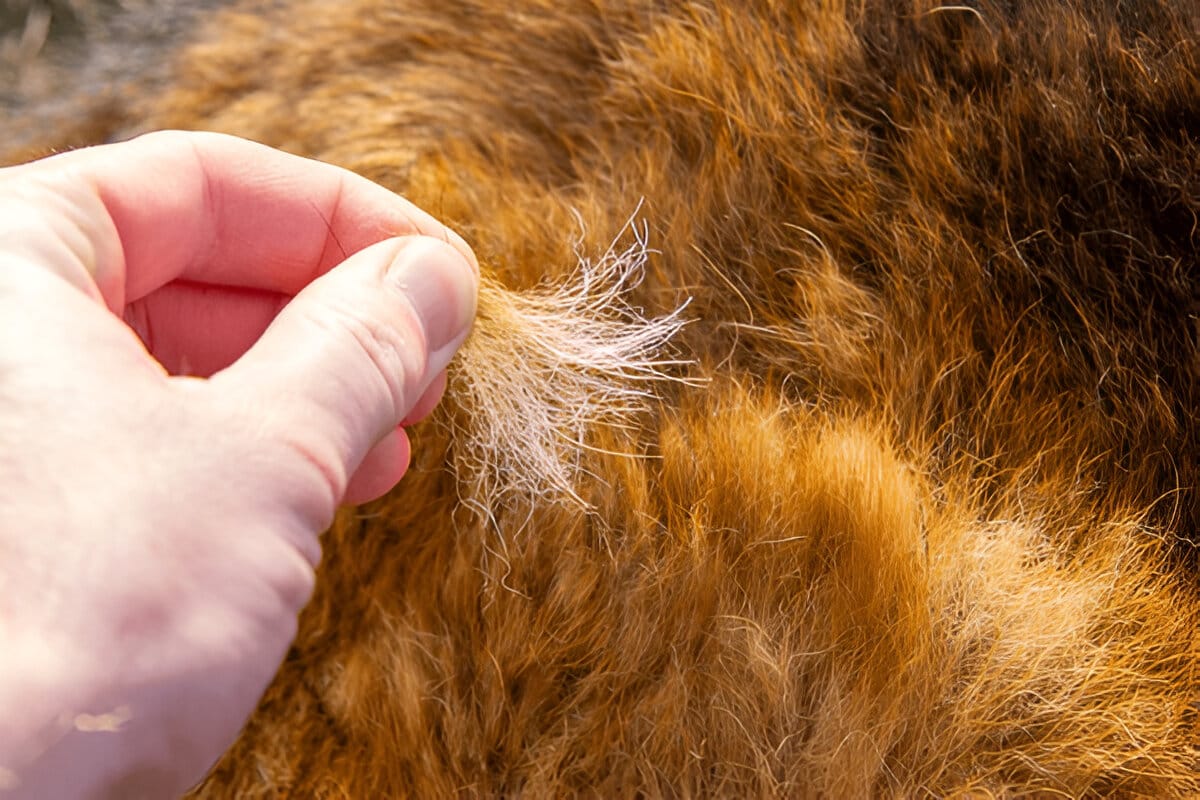
Photo credit: Shutterstock by Adam bartosik
How to reduce shedding in German Shepherd dogs?
By feeding your German Shepherd high-quality food and brushing him frequently and consistently, you can reduce your Shepherd’s shedding in a number of ways. Adding fish oil into his diet, using de-shedding spray and shampoo, and investing in the best grooming tools are proven methods that you can use to manage excessive fur loss.
All these steps will help to remove dead hair before it falls on your furniture and keep your environment cleaner throughout the year. Brush your dog regularly using proper deshedding tools – this single action removes loose undercoat effectively. Never trim their protective coat as it interferes with natural shedding cycles.
Bathe them monthly with moisturizing shampoo specifically designed for double-coated breeds.
Keep their living area hygienic and give them healthy, balanced nutrition every day. Use only premium pet products and ensure they’re well-hydrated with fresh water access. Check and control fleas and ticks through regular inspections, as these parasites worsen shedding problems.
Provide stress-reducing activities like gentle massage and mental enrichment games. Feed them shed-control nutritional supplements as part of their wellness routine. Include omega-3 fatty acids in their daily diet through quality fish oil or salmon-rich foods.
Through years of working with German Shepherds, I’ve learned that owners who commit to daily brushing sessions and premium nutrition see the most dramatic improvements in managing their dog’s shedding patterns.
Brush Regularly
Double-coated dogs, such as the German Shepherd, need to be brushed regularly for optimal health. This is an important routine of your dog’s grooming, especially since it sheds its coat all year round without breaks. It is recommended to brush 3-4 times a week during normal days when shedding is moderate. When shedding season comes, use an undercoat rake to remove loose hair before it falls everywhere.
Brushing helps prevent development of skin problems and any tangling, which is also called matting. Always work in the direction of hair growth, not against it, as this will damage the fur structure. Do it gently so you don’t irritate the topcoat or skin beneath. Keep in mind that brushing time will vary between every GSD based on their size and temperament differences.
Shepherds are particularly demanding to groom because of how much they shed – that frequently makes this breed shed throughout every season. It’s essential to make sure your dog doesn’t have mats or tangles building up. During peak seasons, you can brush almost every day, but be careful to stay gentle with your technique.
On ordinary days, 2-4 sessions per week maintain coat health effectively. You should pay close attention to these problematic areas: Around the scruff of the neck, Behind the ears, The longer fur on back legs, Feathers on the tail, and Long guard hairs on the underside of the body. Unfortunately, some German Shepherds don’t like being brushed, while other GSDs naturally give their best cooperation.
To teach your dog to stay calm if you want to avoid injuries and achieve the best possible results, Never punish your dog if he isn’t being cooperative. Instead, start with small steps – brush for 30 seconds, and if he was good, reward the dog with treats.
A couple of hours later, try for 1 minute and reward him again with tasty treats. Continue this pattern and try to increase brushing time until you can work without any long pause or resistance. By following this method, your dog will learn that brushing isn’t scary and will remain relaxed while you groom.
PRO TIP: Schedule brushing sessions after walking or any kind of physical activity when your dog is tired and more willing to cooperate peacefully.
Never Cut Your Dog’s Coat
Unless a vet recommends it for medical purposes, a German Shepherd’s coat should not be clipped or shortened. You might get tempted to cut or shave your dog’s coat, especially if you see it getting longer and thicker during seasonal changes. However, The double coat serves as crucial protection from harmful environmental factors and, most importantly, is the natural regulator of its body temperature year-round.
If you remove the protective topcoat, it will leave the soft undercoat exposed to coldness in winter and harsh rays of the sun during summer months. Never trim your Shepherd dog unless it’s for health or medical reasons – doubled-coated breeds require their full coat structure. When trimmed, the fur will start growing back unevenly and often faster than normal, creating texture problems that reduce natural protection.
Most people decide to shave their shepherds during hot days, but what we need to show you is that their natural coat is actually helping them stay cool during summer season through proper air circulation. If you want to keep your dog comfortable, don’t shave him – instead, do this: Get a cooling bed for hot days, Keep him at a healthy weight to reduce heat stress, Groom him more frequently to remove loose undercoat, Spray him with a hose for instant relief, Buy a small pool for cooling off, Give him frozen snacks as treats, Add some ice into his water bowl regularly, and Improve air circulation on your premises with fans.
Through my experience with German Shepherds, I’ve witnessed owners who shaved their dogs regretting it when the coat grew back patchy and less effective at temperature regulation.
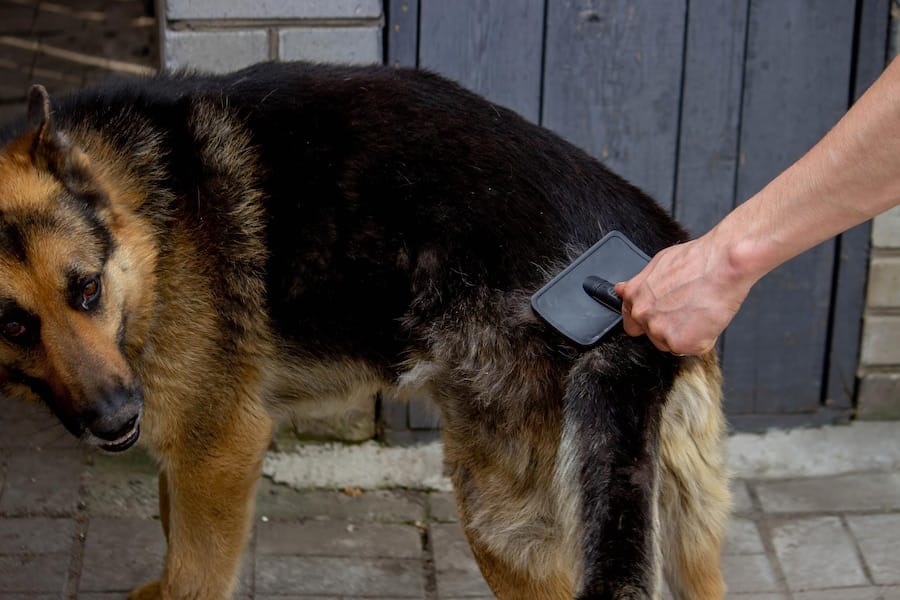
Photo credit: Freepik by anuta23
Bathe Your Dog
Due to their dense coat, German Shepherds do not need to be bathed regularly like other breeds. In fact, they only require a bath once every 3 to 4 months under normal circumstances. This frequency is sufficient to remove all dead and loose hair from the undercoat and keep it smelling fresh and clean without overdrying their skin.
When it comes to bathing, deshedding shampoo and conditioner make the perfect companion for managing German Shepherd fur.
The latter uses a specialized formula that helps slick the dog’s coat for easy removal of loose undercoat. After washing, while the fur is still damp, brushing with an undercoat rake will further help in removing stubborn loose hairs. De-shedding products can significantly help your Shepherd during peak shedding season by minimizing excessive hair loss.
Quality dogs shampoos contain moisturizing ingredients to hydrate Shepherds’ skin, giving them healthier and stronger hair follicles over time. By using these specialized shampoos, the hair roots become strong over time, which also reduces excessive dog scratching behavior.
During shedding periods, dogs scratch more than often because they want to get rid of irritating loose fur that causes skin irritation, but proper bathing can avoid this problem. But be careful – If your dog experiences increased shedding, it doesn’t mean you should bathe every day or week.
With German Shepherds, washing once per month is ideal. Most vets recommend one to two baths monthly, but make an exception for GSD care – just make sure to use gentle, moisturizing products.
PRO TIP: Before bathing, try to brush as much as possible to remove loose hairs – this makes the washing process easier and keeps your bathroom cleaner afterward.
Keep a Hygienic Environment
Keeping a clean living space becomes essential when minimizing shedding in your German Shepherd, as dirty environments allow parasites like fleas and ticks to thrive, which cause skin irritation and lead to increased fur loss.
Make sure to regularly wash your dog’s bedding, blankets, and toys using pet-safe detergents, and don’t forget to vacuum floors and furniture to remove loose hair and dander from the environment. This hygienic approach reduces allergens and stress that can negatively impact your dog’s coat health, creating a more manageable shedding situation.
A clean home supports healthier fur production and complements your grooming efforts, making it critical to keep your Shepherd’s surroundings sanitary while ensuring your dog stays clear of other infected dogs that might experience issues with excessive shedding.
Wash food and water bowls thoroughly and maintain this hygienic routine consistently – from my experience with German Shepherds, owners who neglect environmental cleanliness often struggle with persistent shedding problems that could have been easily prevented through proper sanitation practices.
Feed Your Dog a Healthy Diet
A well-balanced, nutrient-rich diet plays a crucial role in your German Shepherd’s overall health and includes maintaining the condition of their coat. From my years of working with these magnificent dogs, I’ve seen firsthand how proper nutrition helps strengthen hair follicles and promote healthy skin barrier function, which can both reduce unnecessary shedding and improve coat quality.
Omega-3 and Omega-6 fatty acids, found in ingredients like fish oil and flaxseed, are especially beneficial for improving coat shine and reducing dryness and irritation that often leads to excessive shedding.
When you feed your dog a balanced diet that’s tailored to their age, weight, and activity level, you’ll likely notice less loose fur around the house and fewer grooming challenges down the line. I always recommend owners talk to their vet about the best food options for their specific dog, as they may also recommend supplements to boost nutrition, particularly during shedding seasons.
A well-fed German Shepherd with effective nutrition will have a coat that’s hydrated from the inside out, an improved immune system that can better fight off illnesses, and higher energy levels that makes daily grooming easier and more effective.
Keep in mind that while a significant amount of shedding is normal for any Shepherd, the right diet will help maintain their coat health and make you better prepared to preserve their beautiful coat while keeping shedding more manageable. Ask your veterinarian for advice on other possible dietary adjustments, and remember that simpler, consistent feeding routines often work best to support your dog’s overall health and make the grooming process less challenging.
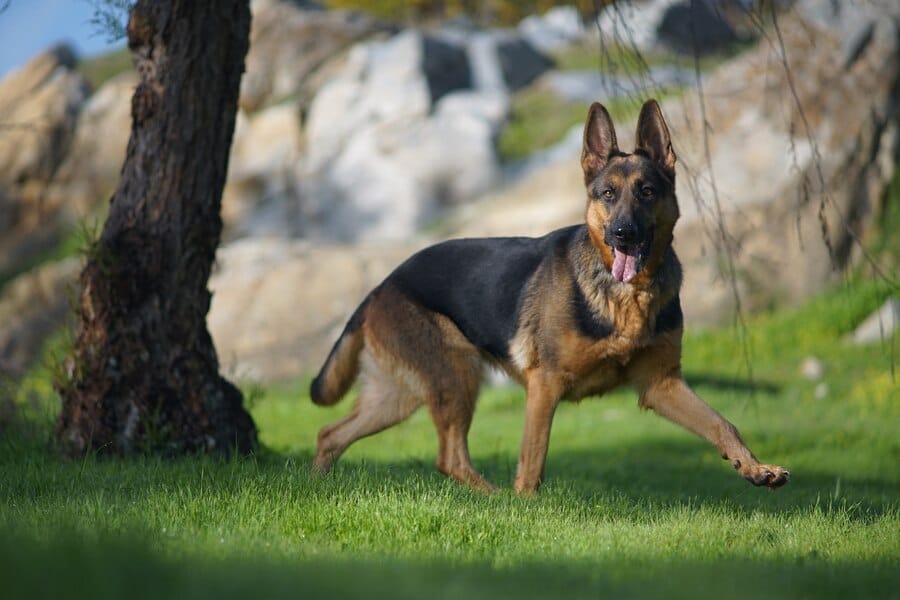
Photo credit: Freepik by wirestock
Tips for Managing German Shepherd Shedding
Groom Consistently
While daily brushing isn’t always realistic for busy owners, you can schedule professional grooming every 4 to 6 weeks where experienced groomers can bathe, blow-dry, and brush your dog thoroughly, saving you valuable time while managing your German Shepherd’s shedding effectively.
Keep Your Home Fur-Free
Invest in tools that make life easier when managing German Shepherd shedding – keep lint rollers everywhere for quick touch-ups, use furniture covers for easy cleaning, and get a high-quality vacuum with a pet hair attachment to help them stay ahead of the constant fur battle.
Can I Stop My German Shepherd From Shedding?
The truth is you cannot completely stop shedding since it’s a natural process that helps German Shepherds maintain a healthy coat, however you can significantly reduce the amount of stray fur around your home by following these proven tips.
Brush daily to remove loose undercoat before it falls naturally, limit your dog’s time outdoors during cold weather to prevent excessive coat thickening, and consider having your dog spay or neuter since hormonal changes can impact shedding patterns.
Feed a high-quality diet to support skin health and coat condition, remembering that consistency is key – just a few minutes of brushing daily will go a long way in controlling shedding and saving you from endless cleanups throughout your home.
Do German Shepherds Shed Constantly?
Yes, German Shepherds shed constantly throughout the year, and while they experience heavier shedding during spring and fall when they naturally blow their coats, you’ll still find fur appearing daily in year-round cycles. Managing this continuous shedding isn’t a one-time fix but rather a consistent habit much like feeding, walking, and training your dog that requires ongoing attention throughout the year to maintain control.
Are There German Shepherds That Don’t Shed?
If you’re looking for a completely non-shedding dog, a purebred German Shepherd is not the breed for you since there are no true Shepherds that don’t shed, however mixed breeds such as the Shepadoodle (a Shepherd-Poodle cross) that inherit the low-shedding trait from their Poodle parent do exist.
These dogs shed significantly less than purebred Shepherds, but a word of caution – while coat type is important, it shouldn’t be the sole reason for choosing a dog since temperament, energy levels, and lifestyle compatibility are far more critical factors to consider when selecting the right companion for your family.
The Bottom Line
Owning a German Shepherd means embracing their shedding as part of daily life, and these dogs are not hypoallergenic – they can surprise even the most prepared owner with the amount of fur they produce, however with consistent grooming, a healthy diet, and a routine care schedule, you can minimize the impact and keep your home under control. Before committing to this breed, ensure you’re ready for the extra time and effort it takes to maintain their coat properly, as regular brushing, occasional baths, and professional services will make a noticeable difference in managing their beautiful but demanding fur.

